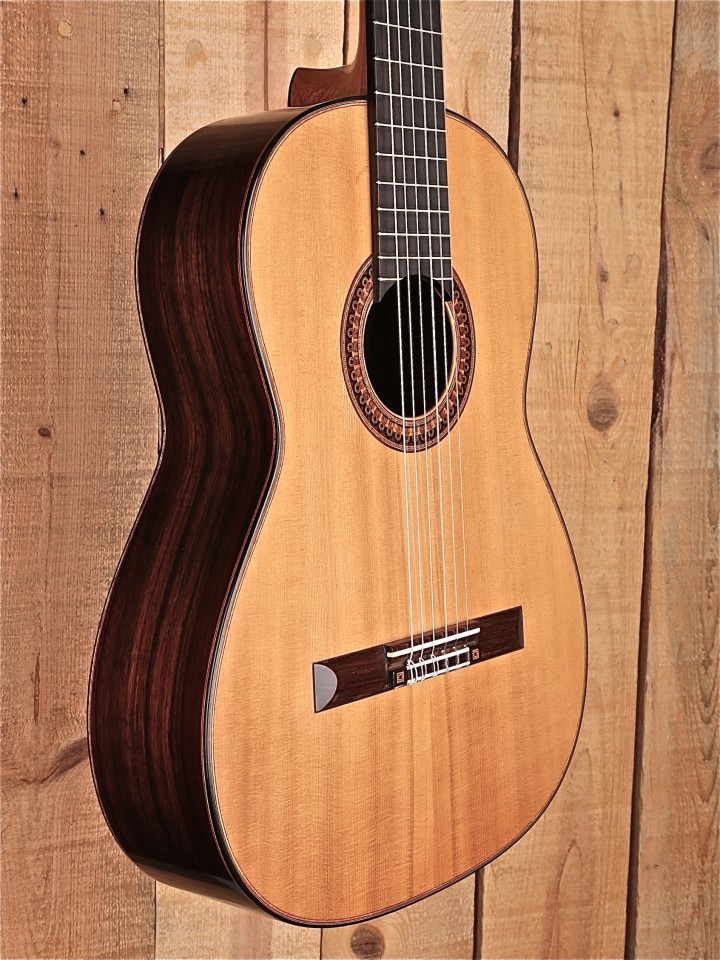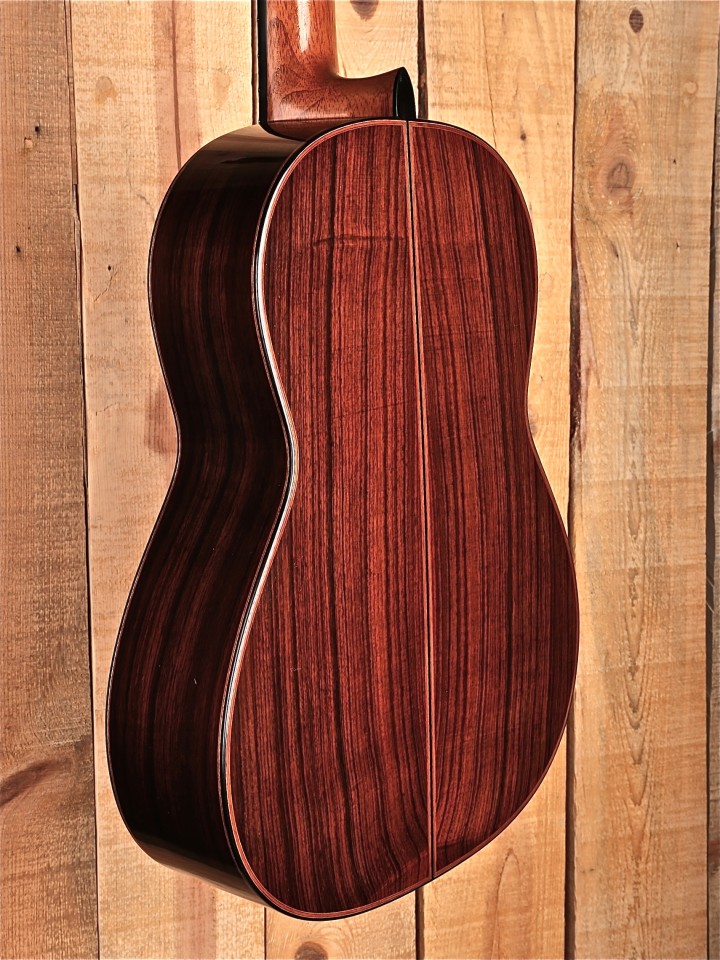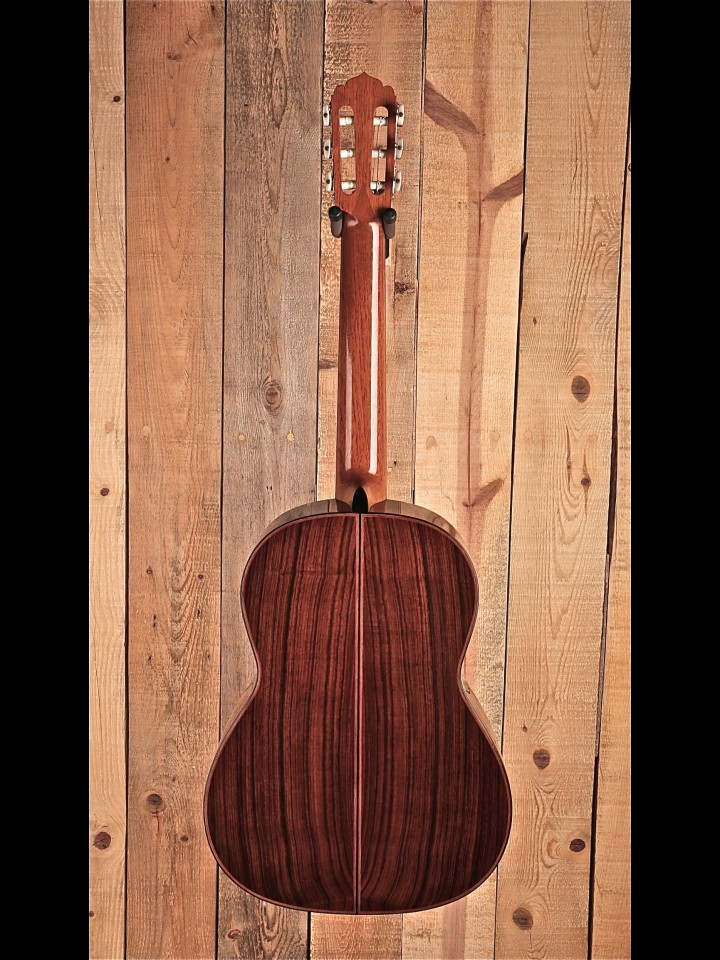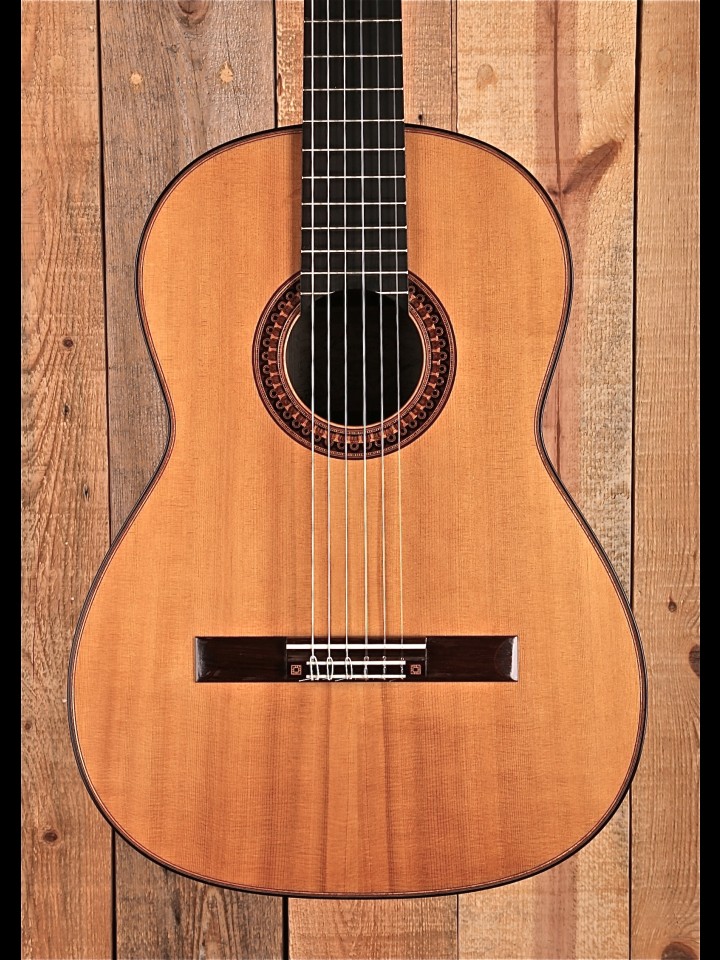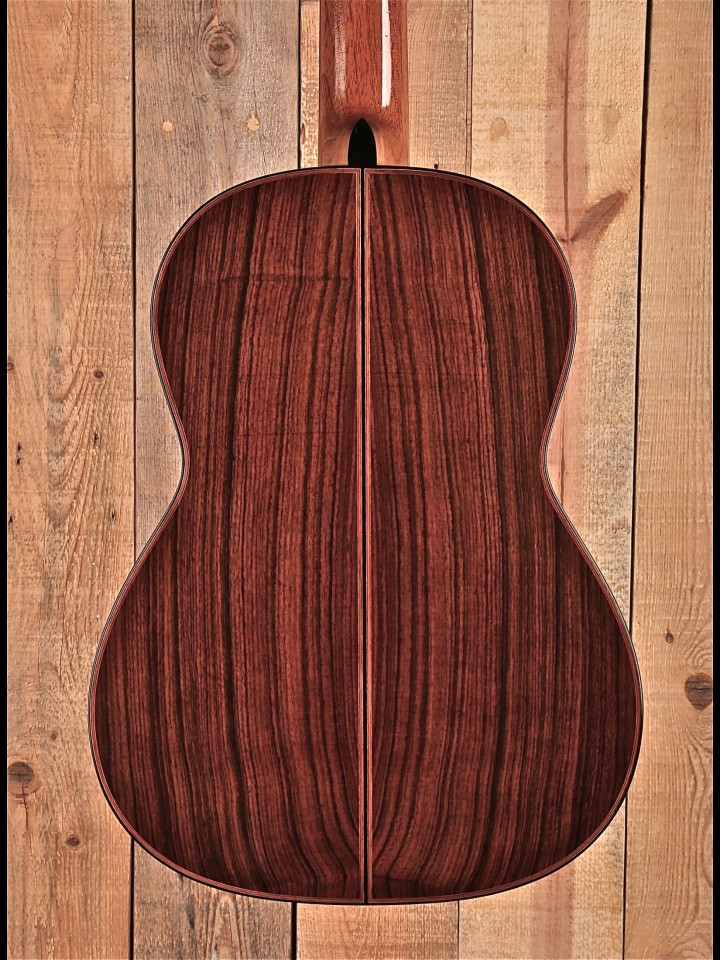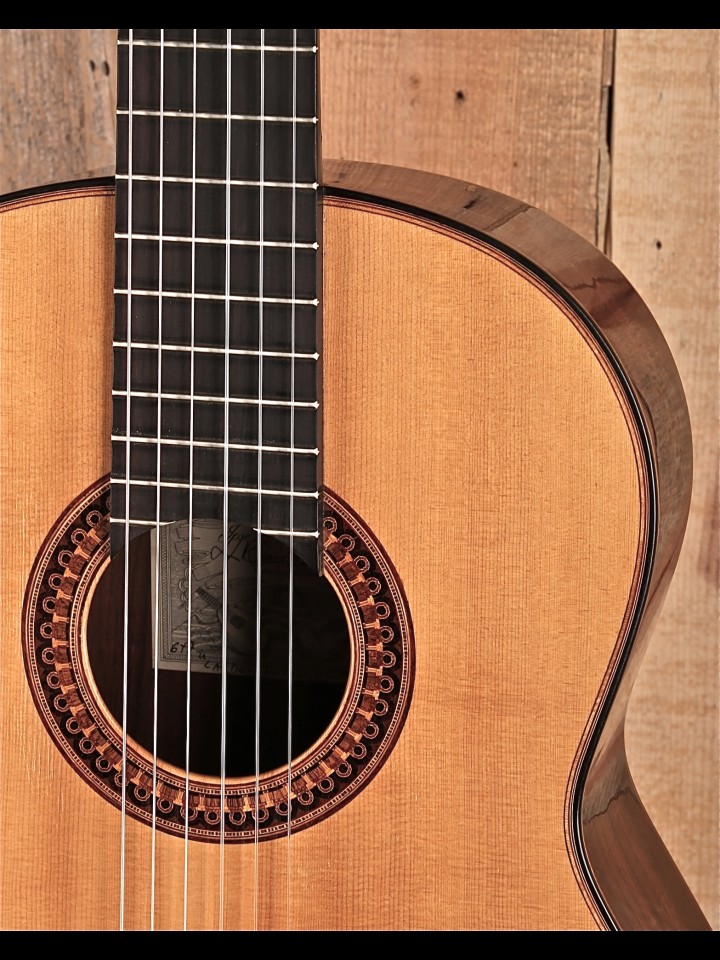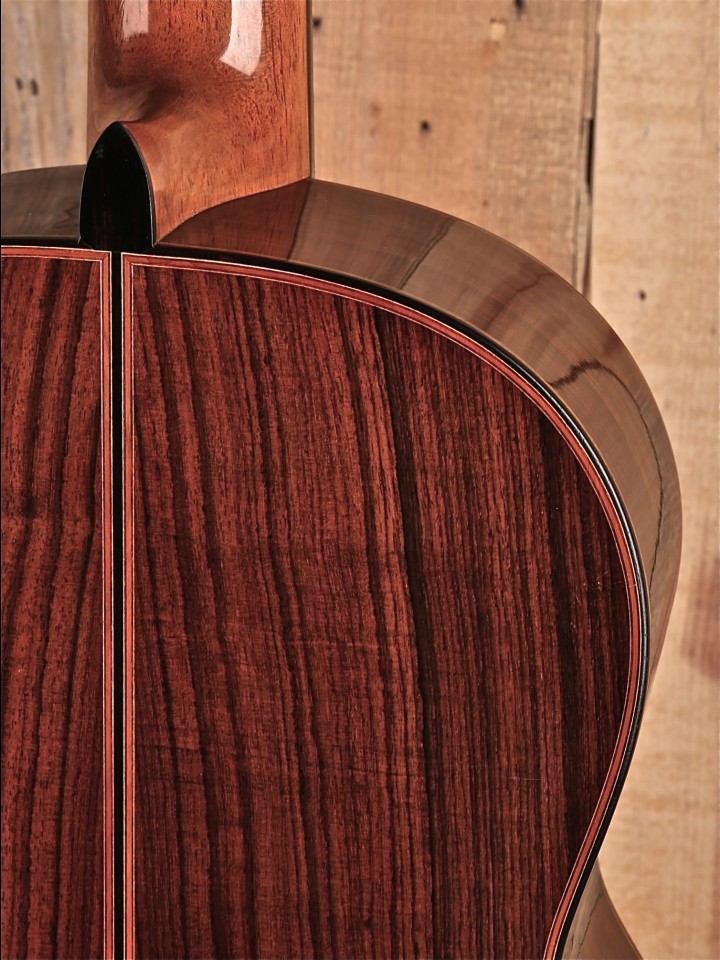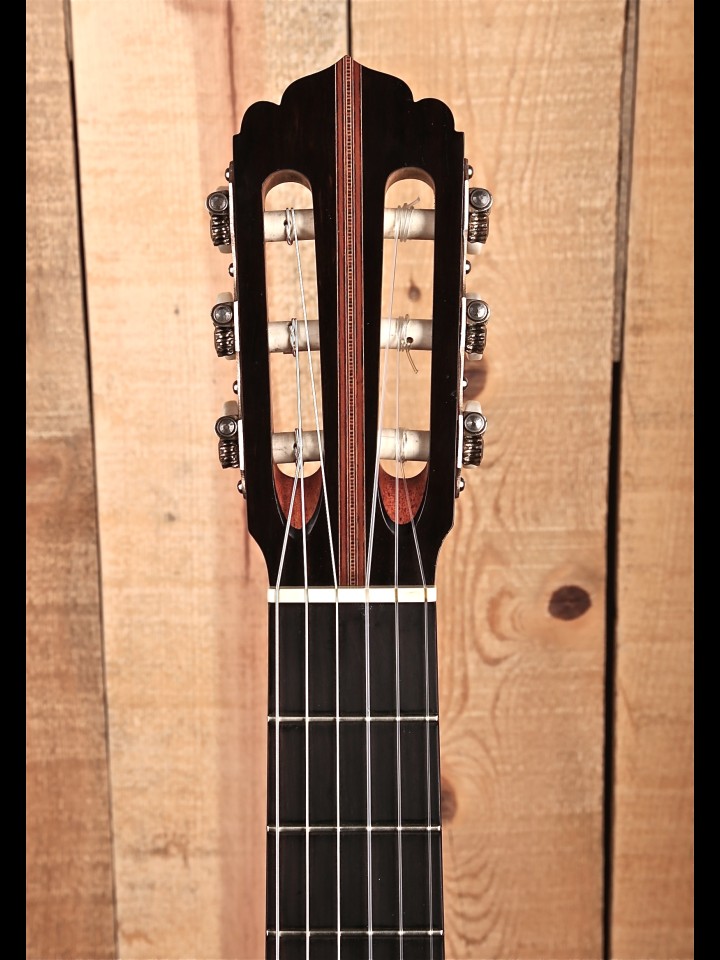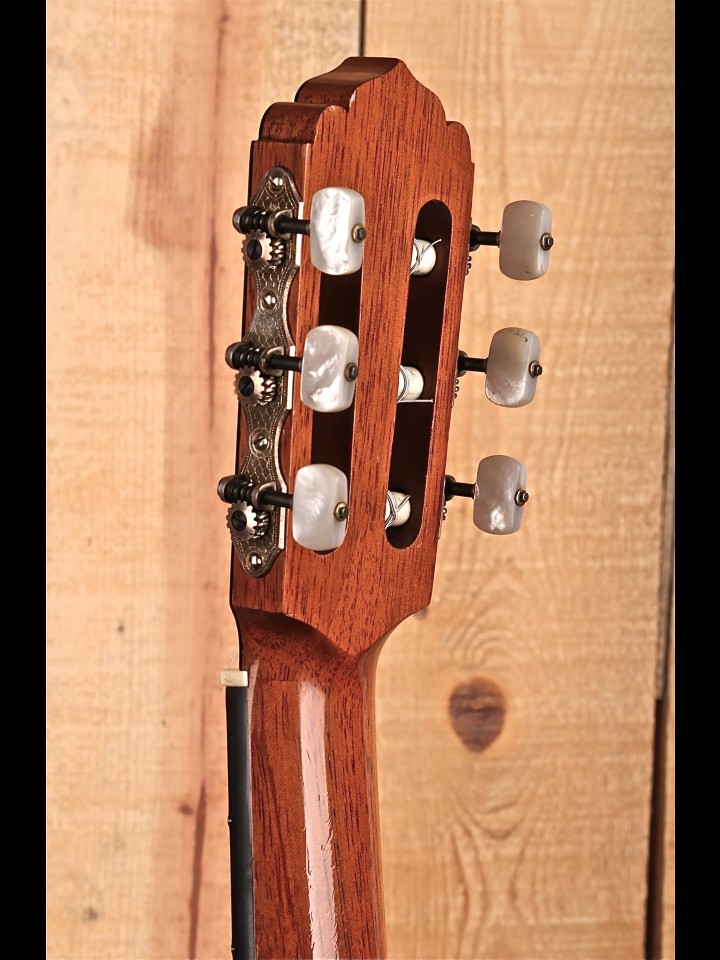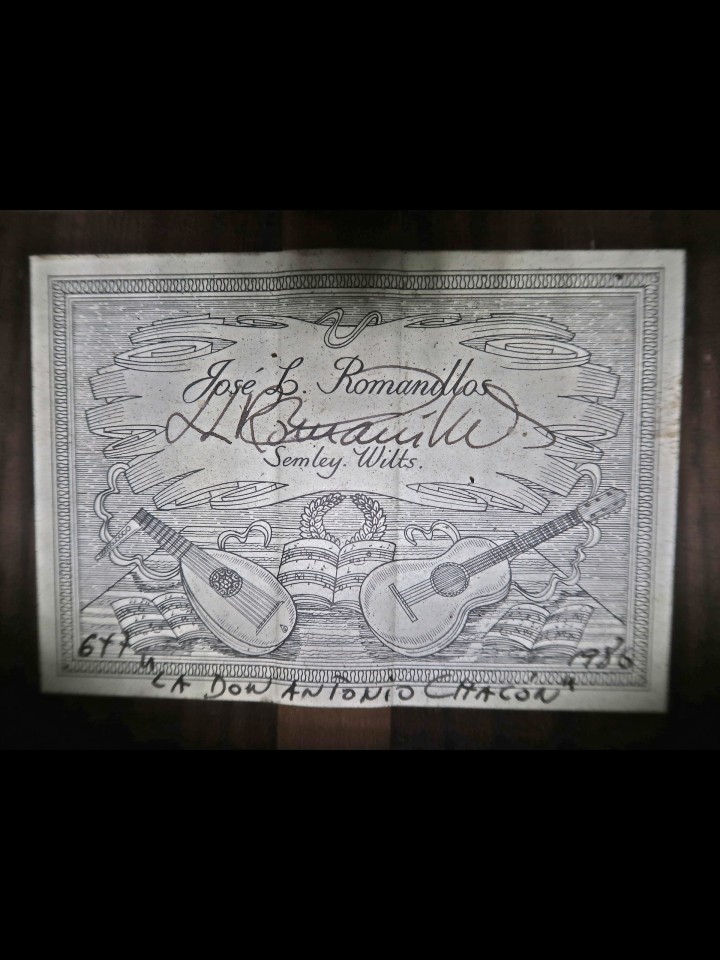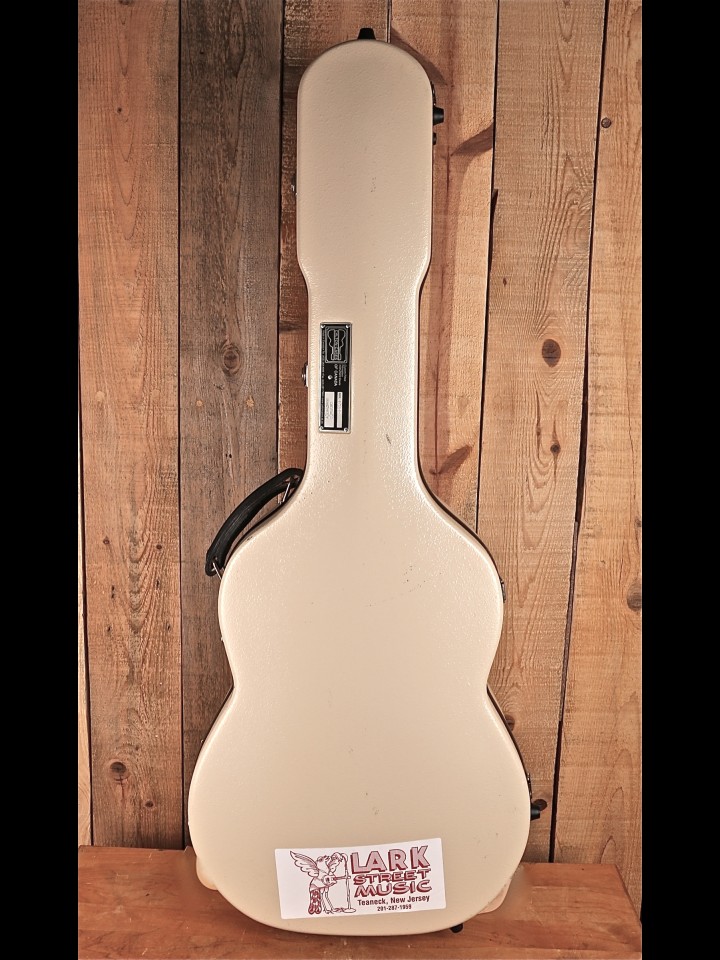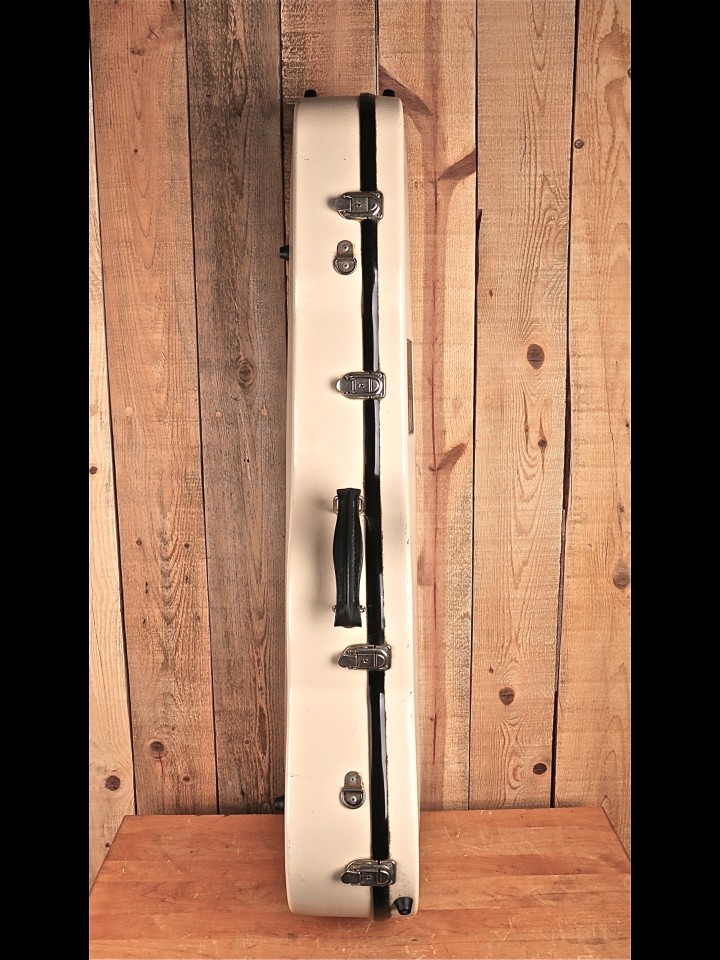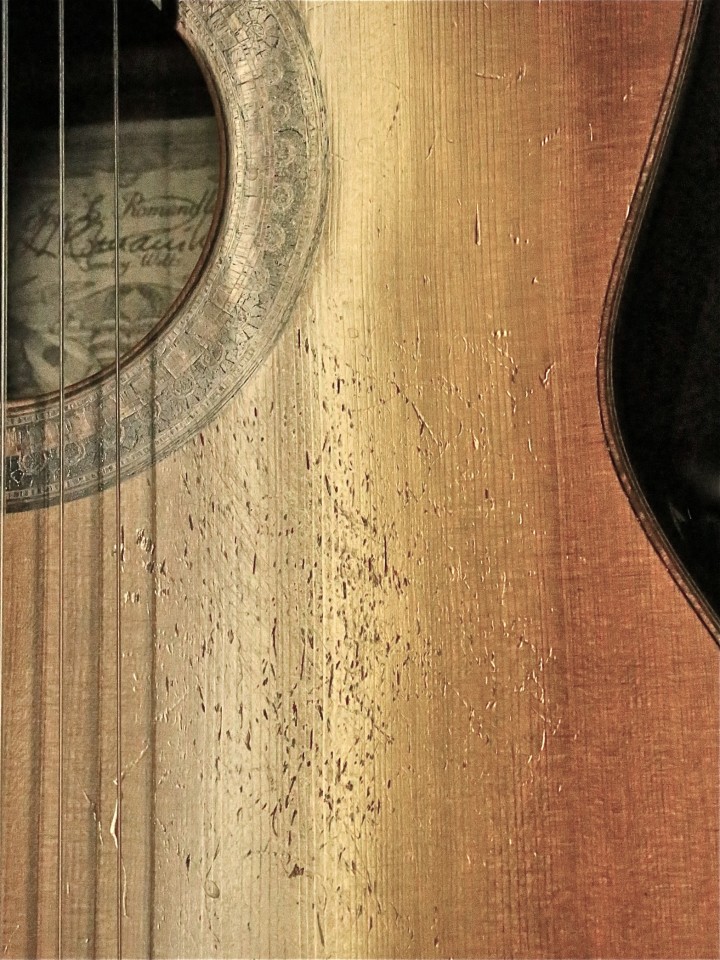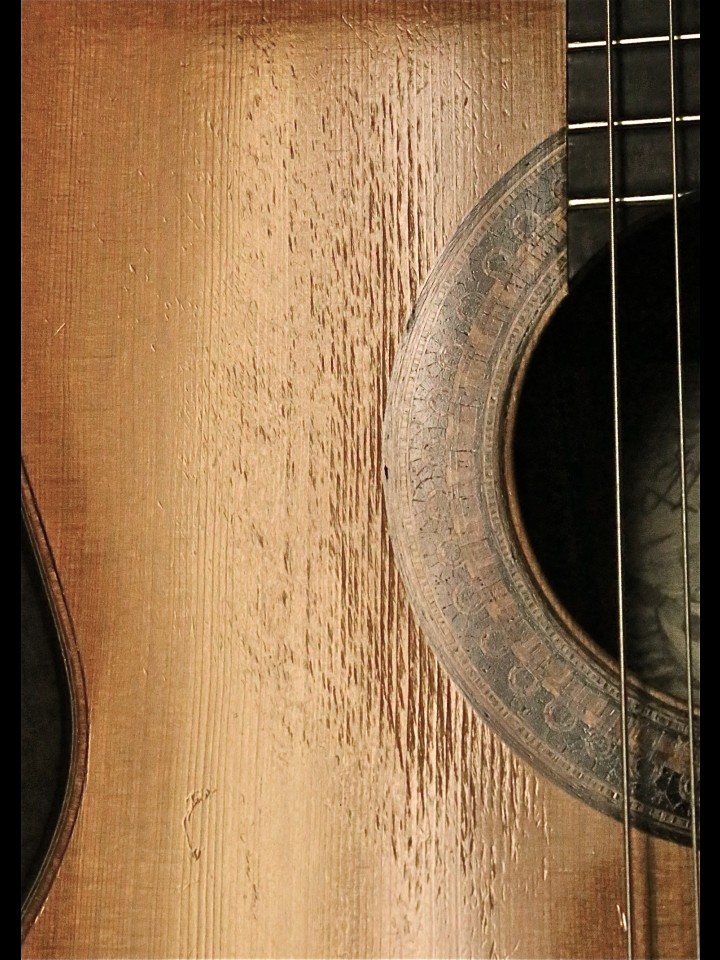1986 Jose Luis Romanillos "La Don Antonio Chacon"
Jose Luis Romanillos Vega (1932-2022) was without question one of the most important and widely respected luthiers of the 20th century and beyond. Like many great guitar builders before and since, Romanillos had an early exposure to woodworking when he began an apprenticeship in a carpentry shop (Madrid-based Caballero Furniture) at age 13. In 1956, at the age of 24, he relocated to England where, in addition to some carpentry work, he briefly worked as a nurse at a psychiatric hospital in Epson before landing at another hospital in London. While in London, a bout of nostalgia for home evidently prompted Jose to build his first guitar in 1961, a flamenco guitar he named “Toribia,” after his mother. Remarkably, the guitar was built on the kitchen table over a period of months with no other guidance than a book entitled, “Make Your Own Spanish Guitar.”
As is so often the case in stories of artistic ascent, success comes from a mixture of one part talent, one part diligence or preparedness, and one healthy dose of luck! And, along that line, Jose was indeed fortunate to have been introduced to the legendary English guitarist, Julian Bream, whose eventual endorsement contributed greatly to Jose’s lofty reputation and the concomitant demand for his guitars. Bream’s enthusiasm and support even extended to an offer of accommodation on his land in Semley, Wiltshire, where Romanillos established his shop in 1970. He built guitars and raised his family in Semley until 1995, when he “retired” to Spain, settling in Guijosa, located in the rural district of Siguenza in northen Guadalajara.
Despite his supposed retirement, Romanillos continued to produce guitars while also advancing his scholarship in guitar history and design. In addition to a ten year stint on the Crafts Council of Great Britain, he dedicated himself to offering courses and lectures on the making of the Spanish guitar and its organology all over the world. He also wrote extensively on the topic. In 2002, he, in collaboration with his wife, Marian, published the seminal English-language compendium of string-instrument builders and the guitars of Spain, “The Vihuela de Mano and the Spanish Guitar.” On its own, this book represents a major contribution to the knowledge base of the guitar community.
According to his son and protégé, Liam, Jose maintained that “the difference between a good guitar and a very good guitar is marginal, but obvious.” Indeed, his instruments are clearly the products of assiduous study and continual refinement, a lifelong effort to craft what Romanillos considered the “Spanish sound,” a voicing fundamentally defined by clear and pure note production and harmonic balance. According to Romanillos, the guitars of Antonio de Torres were the exemplars of this “Spanish sound,” although he also referenced tops/plantillas of a ’36 Hauser and a 1913 Manuel Ramirez in his designs. For back and side materials, he frequently opted for cypress or a variety of rosewoods. But, by his own admission, Romanillos was less concerned with the back and side material, as he contended that the soundboard was most critical. He preferred lightweight spruce for his tops, drawing from a large cache of Swiss spruce—in his words. red cedar should be left for “making roofing shingles and garden sheds.” In his view, spruce best transmitted the clear, focused, and dry quintessence of the “Spanish sound.” Meanwhile, Jose drew aesthetic inspiration from the geometric art of the Moors that is readily on display in the Great Mosque in Cordoba. Perhaps as a romantic nod to the personality and individuality of the instrument (and player), the rosette and ornamentation of each guitar is unique.
Given this dedication to tonal and aesthetic beauty, it seems only natural that Jose Luis Romanillos and his guitars gained tremendous recognition amongst top performers and guitar enthusiasts worldwide. He has been dubbed “the Stradivarius of the guitar” (The Daily Mail), and the Italian publication Sei Corde once referred to him as “the most important living stringed instrument maker.” One gets the sense, however, that Romanillos would have demurred when presented with such praise, preferring instead to let his instruments speak for themselves.
Judging from Romanillos’ stated tonal objectives, this beautiful instrument, named “La Don Antonio Chacon,” certainly embodies his vision of the “Spanish sound.” The player is greeted by a strikingly balanced, brilliant, and focused voice that projects with authority. This carefully-honed balance is such that the basses have ample presence without being woofy or muddy, while the trebles are clear and crisply defined without coming across as clinical. Though not possessed of a lush voice, per se (like that of a cedar-topped instrument from other noted Spanish builders), “La Don Antonio Chacon” offers plenty of harmonic complexity, while exhibiting a distinct dryness that still retains body behind the initial attack. This complexity emerges with the gentle decay of otherwise strongly sustained fundamentals—this is particularly evident with regard to the high E, which carries very well in the upper registers, as well as with the G string, which is quite resolute. In a similar vein, “La Don Antonio Chacon” has an overall quick and dynamic response that is more controlled than it is explosive. This reined-in response combined with the innately strong focus, balance, and sustain translates to an ability to generate a surprisingly malleable range of timbre by virtue of right hand placement (in relation to distance from the bridge) and the directness of the attack.
Apart from its immediate musical attractiveness, such articulate voicing presents a secondary and perhaps more profound benefit—its revealing nature challenges the player by rewarding good technique and punishing the bad. As a result, any player diligent enough to plumb this guitar’s depths will certainly grow in the process. To this end, and as a product of what is manifestly artful and carefully considered construction, “La Don Antonio Chacon” is clearly a special instrument and a fine example of the “Spanish sound,” as interpreted by Jose Luis Romanillos, one of the classical guitar community’s undisputed luminaries.
Condition
By all indications, “La Don Antonio Chacon” was very well-maintained, with no major structural or cosmetic issues to note. Yet, as one would hope for a guitar of such caliber, it has clearly been put to use. As a result, the finish exhibits numerous shallow scuffs and indentations on the body, neck, and rear of the headstock. Likewise, there is a fair amount of light nail wear on top. Finally, the action is at spec and the guitar is quite playable—the action clearance at the 12th fret presently measures approximately 3 mm on the high E and 4 mm clearance on the low E—but there is minimal saddle clearance remaining to lower the action further. EXCELLENT Condition
- Classical Body
- Solid European Spruce Top
- 7-Fan Bracing
- Solid Indian Rosewood Back and Sides
- Ebony Binding, Heelcap, and Endpiece
- 6-Ply Top Purfling
- 5-Ply Back Purfling
- 3-Ply Side Purfling
- Inlaid Mosaic Rosette
- Gloss Lacquer Finish
- Spanish Cedar Neck
- Ebony Fingerboard
- 19 Frets
- Brazilian Rosewood Headstock Veneer
- 15-ply Headstock Strip with Checkered Center
- Gloss Neck Finish
- Rosewood Bridge with Inlaid Wooden Square Ornaments
- Nickel Reischl Hauser Style Tuners with “Fish Scale” Engraving and Mother of Pearl Buttons
- Bone Nut
- Bone Saddle
- 52 mm Nut Width
- 25 mm String Spacing
- 650 mm Scale Length
- Calton Flight Case
| Brand | J.L. ROMANILLOS |
| Model | ROMANILLOS |
| Serial Number(s) | CHACON |


